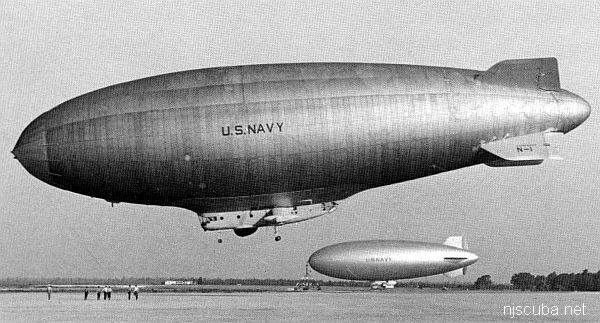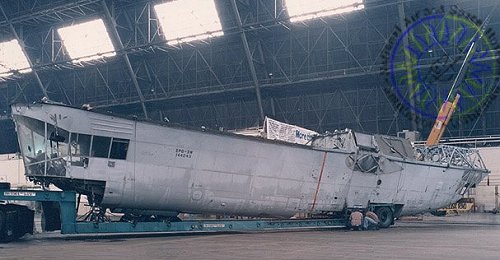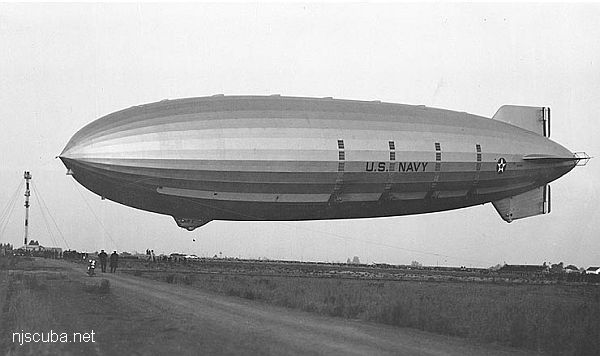ZPG-3W Reliance

- Type:
- shipwreck, blimp, U.S. Navy
- Built:
- 1958, Akron OH USA
- Specs:
- ( 403 x 85 ft ) 40 tons, 21 crew
- Sunk:
- Wednesday July 6, 1960
unknown cause - 18 casualties - Depth:
- 60 ft
ZPG-3W was not a name or an identification number, but a class of aircraft. Four of these, the last and largest of the Navy's airborne radar picket blimps, were built in the late 1950s. The rotating radar aerial was contained inside the gas envelope. They were among the largest non-rigid airships ever constructed. The entire program was discontinued in 1961. Today this mission is performed by fixed-wing aircraft.
The gondola and other hard parts were probably salvaged for an investigation into the cause of the crash. I doubt there is anything left in the water.



Questions or Inquiries?
Just want to say Hello? Sign the .